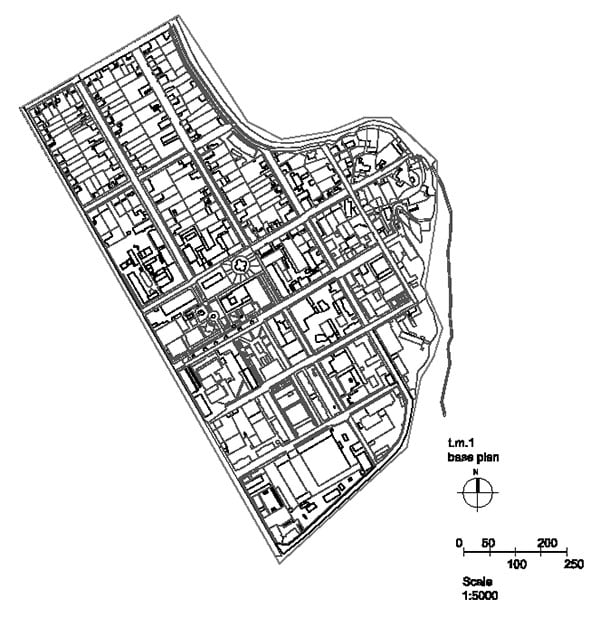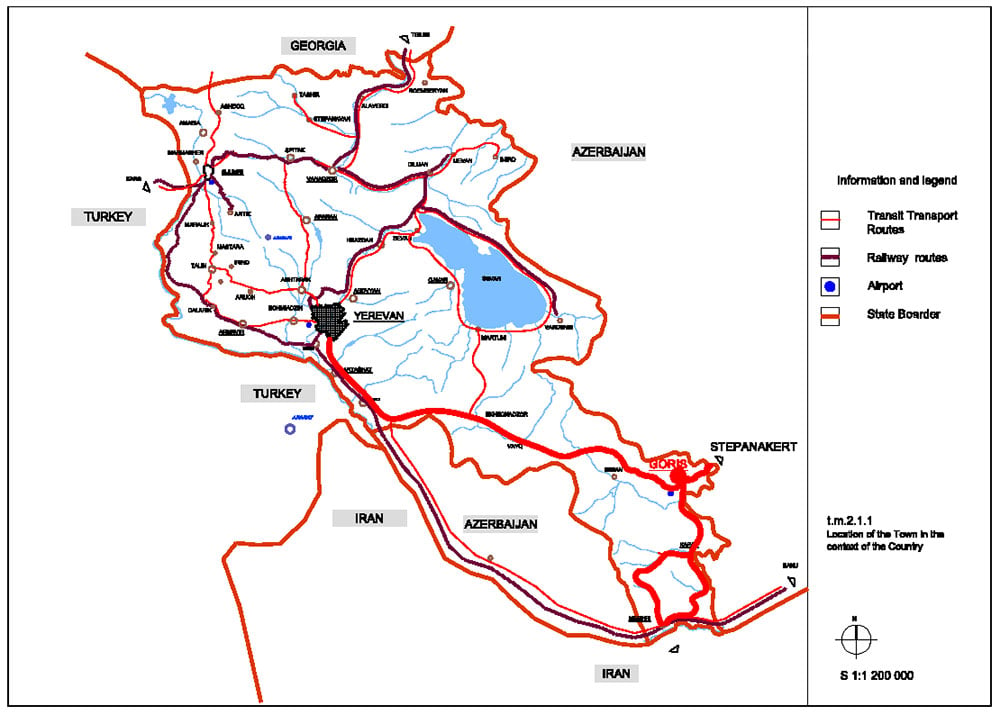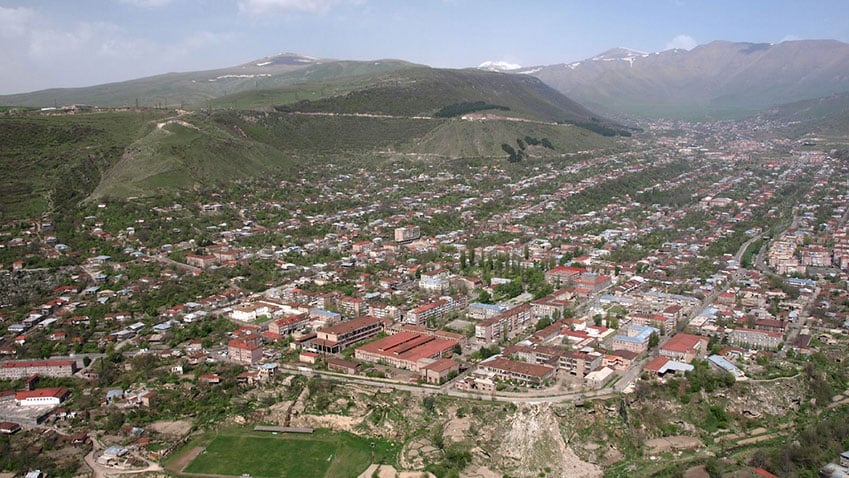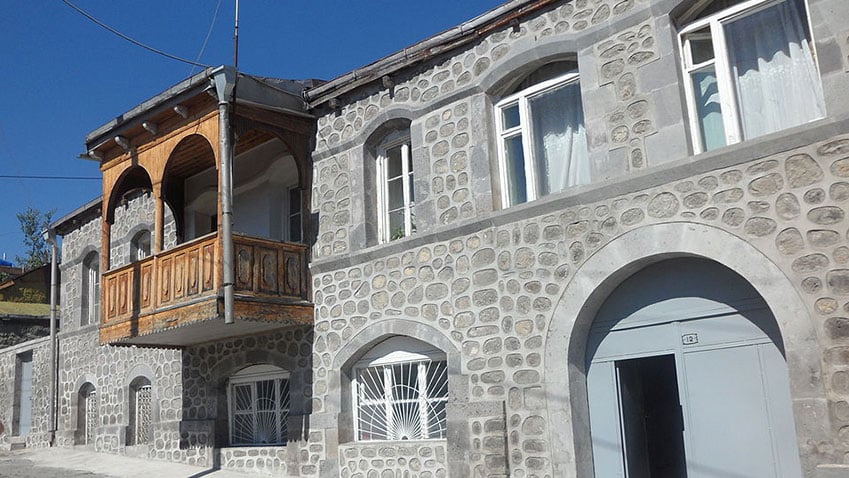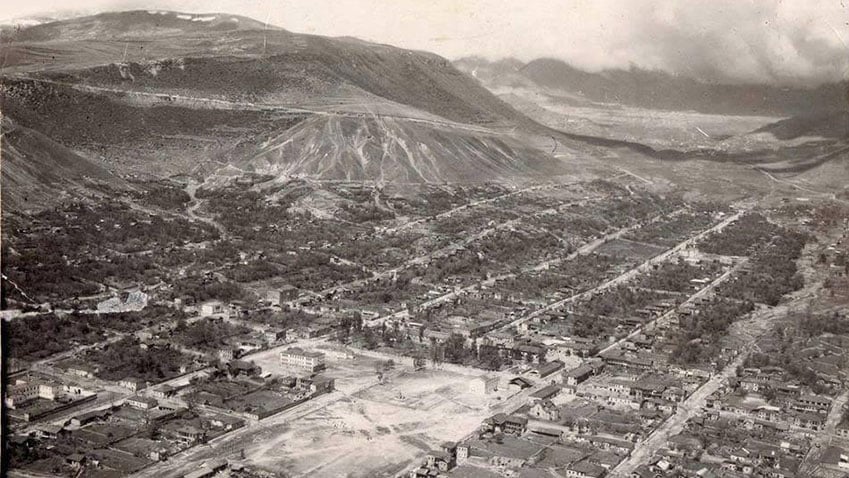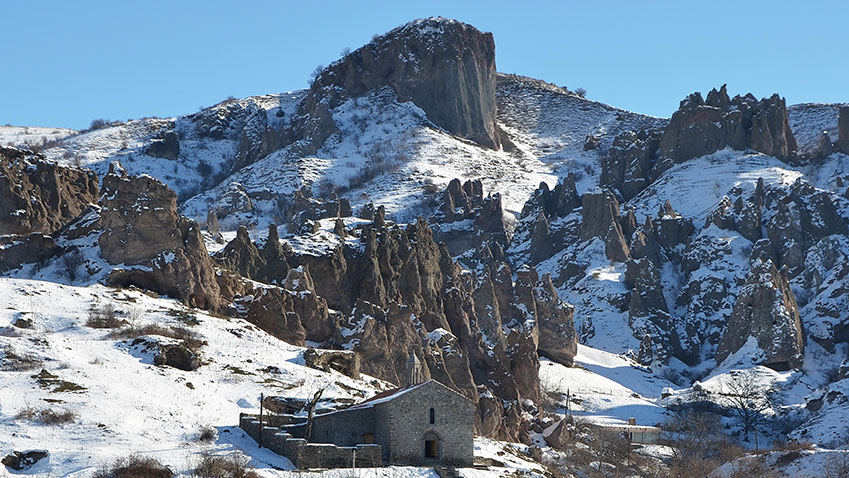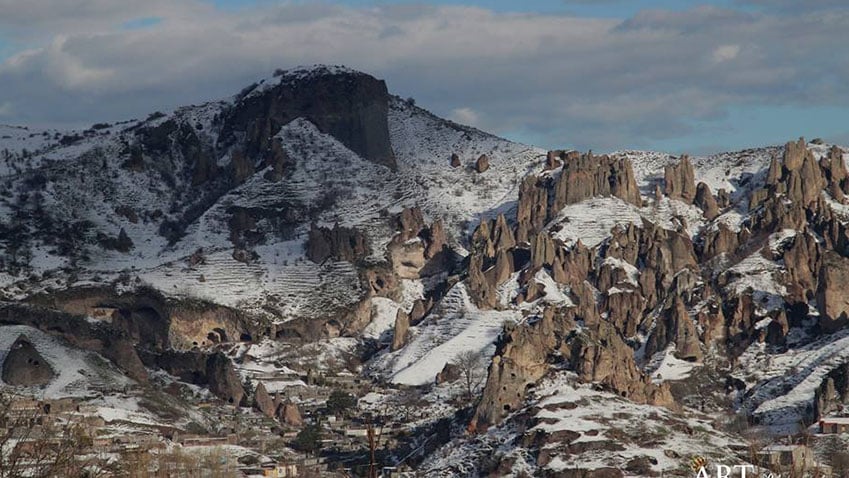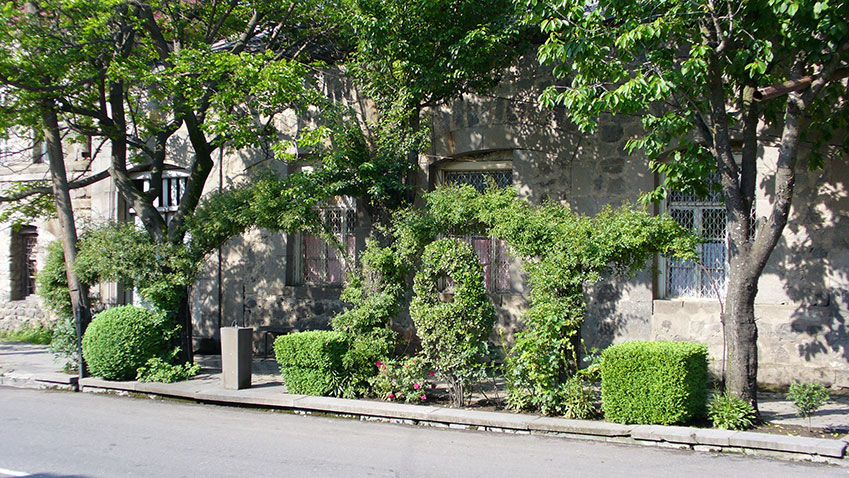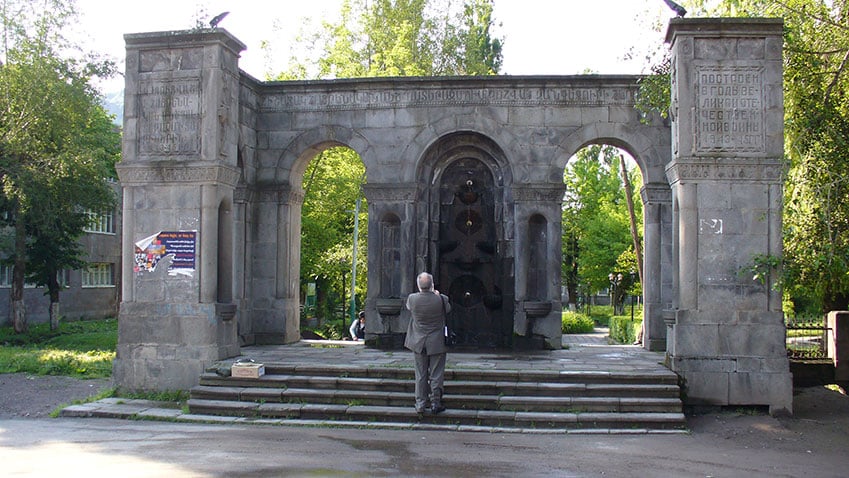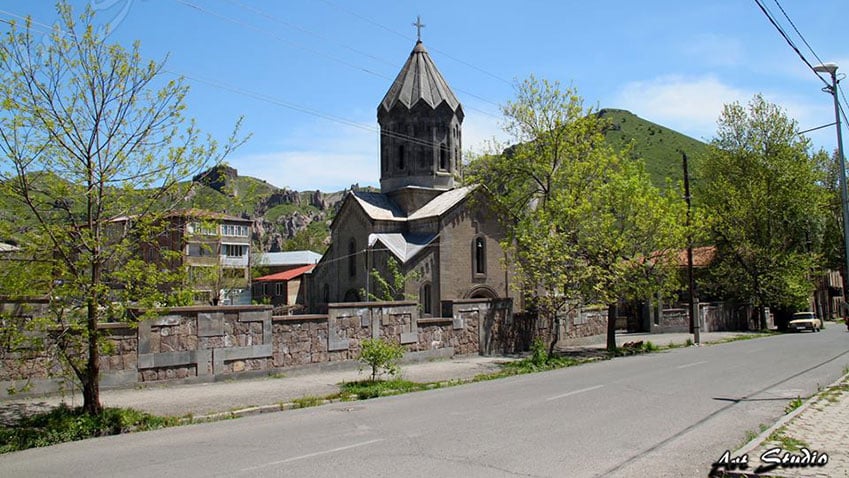COMUS Pilot town: Goris, Armenia


Number of inhabitants: 20 300 (2011)
Area (km²): 8 km²
Goris is an old settlement in the Syunik region of Armenia. First references to it go back to the 13th century. The old settlement was founded on the left bank of the Vararakn River, in a picturesque area surrounded by hills, rocks, caves and ravines. For defensive purposes, dwellers used to build their homes by carving the nearby cone-shaped rocks and in the caves. The neighbourhoods were formed along the natural paths connecting the caves.
From the mid-19th century, the settlement started to grow rapidly and expand to the elevated wide plateau on the right bank of the river. The first Master Plan of Goris was adopted in 1850, based on some oral histories by engineers with German origins. Political and economic conditions of that period, as well as construction of the strategic regional road networks fostered the trade relations that increased the role of Goris as an urban settlement. The town entered a very active phase of construction, particularly in the 1870s. Goris officially received town status in 1870 and became the administrative and trade centre of the Zangezur province of the Russian Empire. In this period, many administrative, trade and public buildings were built that shaped the current unique image of Goris.
Construction of unique-style traditional one-two-storey houses, public, administrative and trade buildings across the perpendicular street networks shaped the historical centre of the town. With the construction of the Yerevan-Joulfa railroad at the beginning of the 20th century, Goris has gradually started to lose its administrative role. Despite this fact, Goris continued to grow and its population and the territory currently occupy a larger area.
Goris is one of the rare towns whose historical centre has not been dramatically affected by those changes. Its favourable geographical location, climate and the unique natural landscape, as well as the rich cultural heritage and the well preserved local traditions, together with the existing infrastructure and human potential are the prerequisites for the sustainable development of Goris and improvement of the social and economic conditions of the local population. Therefore the protection, restoration and use of cultural heritage could play an important role for urban development of the town and surrounding areas.
 outputs
outputs
Goris
- Preliminary Technical Files (PTF) in Armenian
- Reference Plan (RP) in Armenian
- Preliminary Technical Assessments (PTA) :
- PTA1- Transport System and Stations for Goris community area in Armenian
- PTA2- Goris Urban Streets Rehabilitation in Armenian
- PTA3- Study and Proposal for the 5th façade (roofs) in Armenian
- PTA4- Rehabilitation of Old Goris Cave town in Armenian
- PTA5- Redevelopment of Surrounding area of the Football field to Sport Cultural Park in Armenian
- Feasibility Study (FS) :
 Statement by the Mayor about COMUS
Statement by the Mayor about COMUS
 "Goris is one of the unique cities of Armenia that has kept its historical appearance. Through the COMUS programme, which also aims to preserve and transmit cultural values, we have high expectations for the implementation of joint projects. COMUS has a great role in smart planning and organising/management.
"Goris is one of the unique cities of Armenia that has kept its historical appearance. Through the COMUS programme, which also aims to preserve and transmit cultural values, we have high expectations for the implementation of joint projects. COMUS has a great role in smart planning and organising/management.
COMUS is an exciting initiative, a great programme for Goris, which undoubtedly will lead to increased welfare. We already have a strong team of stakeholders interested in city development. Stressing the importance of the preservation of historical and cultural values, we can also benefit from it."
Vachagan ADUNTS
Mayor of Goris
 Priorities
Priorities
Heritage specificities
Goris is one of the rare towns of the region that was built based on a designed Master Plan that dates back to the 19th century.
The most unusual feature of Goris is the uniquely styled one-two storey houses, with stone fences and arched gates. Throughout its history, Goris has accumulated a large number of cultural heritage monuments: worship and defence structures, administrative, private and public buildings. The most valuable part of it is the Old town and the historical core of the current town centre, where the unique architecture is harmoniously related to the surrounding natural and urban landscape. The late 19th and early 20th century constructions in the town are highly ranked among the most valuable urban development history objects in Armenia.
Local challenges
As a historic medium-sized town surrounded by different historical and cultural attractions, Goris is the place where most travellers in the region are accommodated. This increase in tourism represents a challenge, because of the impact of the new activities and developments in the historical environment of the town. In this way, the Local Stakeholders Group propose the following issues to be addressed in the framework of the project:
- The absence of a clear plan of the city and potential consolidated area, as well as the need for regulation policy to exclude the subjective and individual decisions and acceptances;
- Tourism is stated as a priority of city development without any clear policy, and with many obstacles.
- The existing movement system of the city needed for development, as well as integration with the historic district of Old Goris, especially developing routes of wheeled vehicles;
- Wastelands. The environmental condition of the Vararakn River, illegal landfills, improvement;
- The main square and two parks are not city entertainment places because of administrative buildings and surrounding industrial surfaces and the moving prison complex.
Priorities
Heritage enhancement
As Goris is a small town, the entire town area within the borders of the Goris Municipality is being considered for COMUS activities.
According to the studies carried out in the city and archival materials, the historic town in Goris is 164 hectars.
The historical and cultural heritage of the town is registered and protected by the state. The historical centre of the town is included in a special historic zone. The “Hin Goris” (Old Goris) community has been given the status of a reserve. Protection of the historical and cultural monuments is regulated by the law and related bylaws. This protection is exercised at state level. The historical centre of the town is included in the special protected zone, where any new construction activities have to be conducted with the approval of the Ministries of Culture and Urban Development.
The majority of monuments are private properties, and most owners do not have the proper means to maintain them. As the resources of the local community budget are scarce, there are insufficient funds to carry out the necessary maintenance and protection activities.
Reduction of urban wastelands
Specific solutions to environmental challenges
There are also a number of unresolved environmental problems in Goris, for which it is necessary to carry out the following activities, taking into account the long-term goal: to transform Goris into a "smart," green city.
Enhancement of urban landscapes and public spaces
In the geometric centre of Goris are the social, administrative, commercial, recreational and cultural-educational functions serving the social centre, which is surrounded by residential neighbourhoods.
The major part of state and communal services are provided on the territory of the historical centre (notary, registry, passport and visa information offices, employment and social security offices, museums and cultural centres). In addition, all public transportation routes run through the historic centre. Streets in the historical centre are asphalted and almost totally provided with night-time lighting. The following cultural and leisure establishments are located in the historical centre:
- Club for Cultural Events: 1
- Museums and galleries: 4
- Theatre: 1
- Art school: 1
- Parks: 2
- Sport arenas: 2
- Restaurants and cafeterias: 6
- Electricity supply: 100% Water supply: 100%
- Sewerage: 90% (there is a need to expand the sewage network)
- Natural gas supply: 85% (the service is provided on demand)

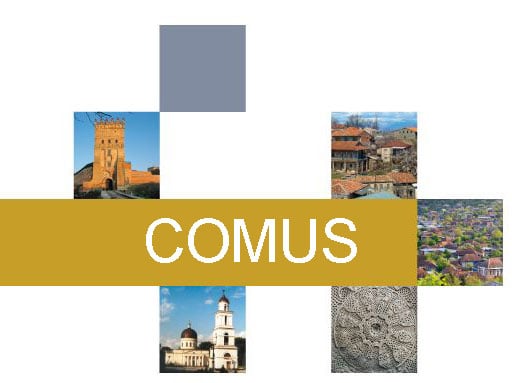
 Contacts
Contacts
Mayor of Goris

- Mr Vachagan ADUNTS
National Coordinator
- Ms Gohar GRIGORYAN
Project officer
- Sarhat PETROSYAN
Project Implementation Unit
- Arus HAYRAPETYAN
Senior Specialist at Department of Culture and Sport of Goris Municipality - Garegin PARSYAN
Chief Architect and Department Head of Urban Planning of Goris Municipality - Armen SARGSYAN
Senior Specialist at Department of Urban Planning of Goris Municipality - Gevorg BOLYAN
Deputy Mayor of Goris - Zhirayr MARTIROSYAN
Director of Goris Municipal Gallery - Aram MUSAKHANYAN
Specialist of Educational Projects ''Partnership and Teaching'' NGO - Artur KHOJABAGHYAN
CEO of AugmentAr CJSC - Tigran BARKHUDARYAN
Branch Manager of ''Ardshinbank'' CSJC, Branch Manager - Vahagn ADUNTS
Student of Yerevan State University - Zhora ALEKSANYAN
Chairman of Old Khndzoresk Development Foundation - Gayane MARTIROSYAN
Executive Director of ''Mirhav'' Hotel
 Press
Press
COMUS Pilot Town Goris has been declared a CIS Cultural Capital 2018
 General information
General information
Location of Goris in Armenia
View of Goris
Goris House (19th century)
Goris in 1950s
St Hripsime church
Old Goris
Goris traditional street
Source monument dedicated to World War II (1946)
St Grigor Lusavorich Church 1903








